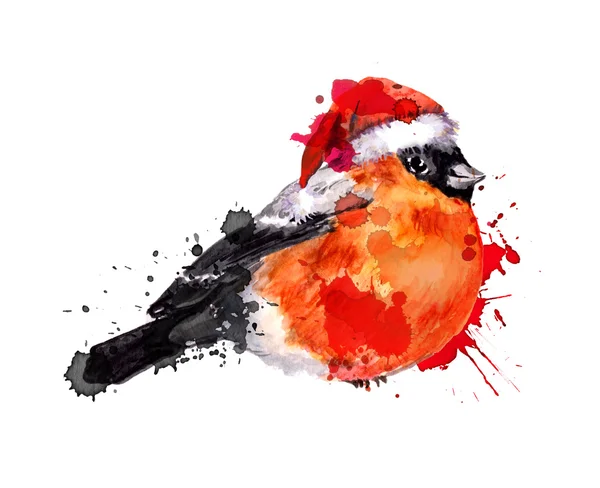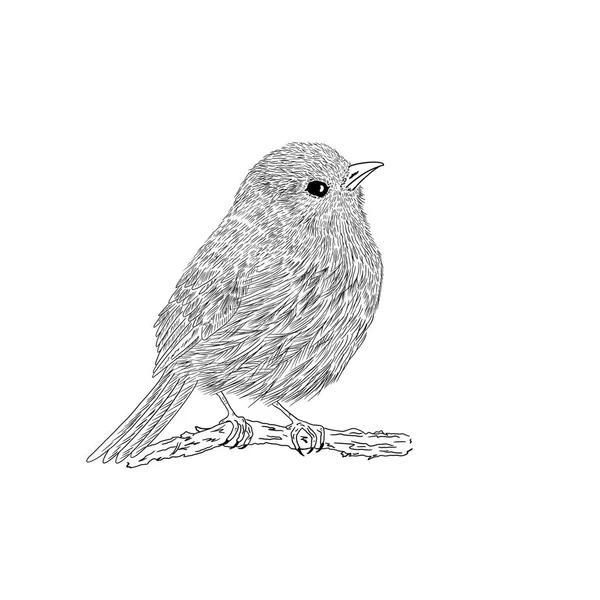Fascinating Facts About Hummingbird Sizes: The bee hummingbird, native to Cuba and the Isla de la Juventud, holds the title as the world’s smallest bird, with females weighing just about 2.6 grams—less than a nickel coin.
In the enchanting world of feathered wonders, hummingbirds emerge as pint-sized dynamos, defying the conventional scale of avian proportions. These captivating creatures, with wings that beat faster than the human eye can perceive, hold a treasure trove of fascinating facts when it comes to their sizes.
From the thumb-sized marvels that flit through tropical rainforests to the diminutive dynasties ruling backyard feeders, the realm of hummingbird dimensions is a testament to nature’s ingenuity in crafting living jewels that prove dynamite truly comes in small packages. Brace yourself for a journey into the minuscule marvels and mind-boggling measurements that make hummingbirds not just masters of the sky, but also rulers of the petite.

Fascinating Facts About Hummingbird Sizes
Hummingbird Size Rankings
Delving into the realm of hummingbird dimensions, the bee hummingbird, native to Cuba, holds the title of the world’s smallest bird. Weighing a mere 1.6 to 2 grams, its petite frame rivals that of an insect. On the other end of the spectrum, the giant hummingbird, dwelling in the South American Andes, boasts a comparatively hefty weight, emphasizing the surprising diversity within this petite species.
Nectar-Driven Adaptations
The seemingly paradoxical combination of fragility and resilience in hummingbird sizes stems from their unique adaptations. These agile creatures have evolved to be efficient nectar harvesters, requiring incredible energy for their rapid wing beats. Their diminutive stature conceals a powerhouse metabolism, allowing them to sustain their vibrant flights and fulfill their high-energy lifestyles.
Evolutionary Marvels
The evolution of hummingbird sizes is a fascinating journey through time. These pint-sized dynamos have adapted over millions of years, carving a niche in ecosystems that demand precision and agility. Their specialized bills, perfectly shaped for sipping nectar, reflect an intricate dance between survival and the pursuit of sustenance.
Globally Diverse Diminutiveness
Hummingbirds enchant not only with their vibrant hues but also with their global distribution. From the rainforests of South America to the temperate zones of North America, these tiny beings have conquered diverse landscapes. Each region harbors its unique species, varying not only in colors but also in the delicate artistry of their minute physiques.
Classification of Hummingbirds
Hummingbirds, captivating creatures renowned for their agility and vibrant plumage, boast a classification system that mirrors their diverse sizes. The first tier, general classification based on size, categorizes these avian wonders into three distinct groups: small-sized hummingbirds, characterized by delicate dimensions; medium-sized hummingbirds, striking a balance between petite and substantial; and large-sized hummingbirds, distinguished by their impressive stature.
Beyond these broad categories lies a nuanced realm of variation within species. Intraspecific size differences add an intriguing layer, revealing the subtle disparities among individuals of the same species. The factors influencing such size variations, encompassing genetics, environmental conditions, and resource availability, underscore the intricate dance between nature and nurture.
This comprehensive exploration of hummingbird classification resonates with enthusiasts and ornithologists alike, shedding light on the captivating spectrum of sizes within this feathered family.
Anatomy and Physical Characteristics
Delving into the mesmerizing world of hummingbird anatomy unveils a tapestry of physical characteristics that captivate enthusiasts worldwide. Feathers, the epitome of avian elegance, play a pivotal role in shaping size perception. The correlation between coloration and size adds a fascinating dimension, with vibrant hues often magnifying the visual impact of these petite wonders.
Feather density, acting as nature’s insulation, not only provides protection but also contributes to the overall aesthetic allure of these diminutive creatures. Beyond feathers, the intricacies of wing morphology showcase size-related adaptations critical to hummingbird survival. Wing loading, a key parameter in flight efficiency, governs the remarkable aerial prowess of these avian acrobats.
Meanwhile, tail length emerges as a crucial factor, impacting maneuverability with every agile twist and turn. This exploration of hummingbird anatomy and its nuanced elements resonates with bird enthusiasts and scientists alike, unveiling the secrets behind the extraordinary physical attributes that define these majestic creatures.
Metabolism and Energetic Demands
Embarking on the fascinating exploration of hummingbird metabolism unveils a delicate dance between size and energetic demands that defines these aerial dynamos. A remarkable correlation emerges, revealing higher metabolic rates in smaller hummingbirds, where their diminutive stature necessitates a constant influx of energy to fuel their ceaseless activities.
Conversely, larger hummingbirds exhibit a strategic energy conservation approach, leveraging their size to optimize efficiency in energy utilization. The interplay between size and feeding habits is equally intriguing, with hummingbirds displaying size-dependent foraging strategies. Their bill size becomes a critical factor in flower selection, underscoring the evolutionary adaptation that aligns their anatomy with their dietary needs.
This size-centric approach extends to daily nectar intake, where the hummingbird’s size directly influences the volume of energy-rich nectar they consume. Unveiling the intricacies of hummingbird metabolism and their size-driven energetic demands illuminates a captivating narrative appreciated by bird enthusiasts and researchers alike.
Reproduction and Mating Behavior
Embarking on the captivating realm of hummingbird reproduction and mating behavior unveils a symphony of size-related nuances that define their courtship rituals. Size emerges as a critical factor in the intricate dance of mate selection, with both males and females showcasing distinct mating displays tailored to their dimensions.
Amidst this avian romance, fierce competition unfolds among males of different sizes, each vying for the attention and favor of potential mates. Nesting preferences, an integral aspect of the reproductive journey, also showcase size-dependent considerations. Nest size becomes a canvas for structural adaptations, reflecting the unique characteristics of each hummingbird species.
Brooding behavior, intimately tied to body size, adds another layer to the narrative, revealing how the intricacies of size influence the nurturing aspects of hummingbird parenthood. This exploration of hummingbird reproduction delves into a realm of size-related dynamics, enticing bird enthusiasts and researchers alike with the compelling intricacies of avian courtship and family life.
Geographic Distribution and Ecological Niche
Embarking on a geographical odyssey through the realm of hummingbird diversity unveils a compelling tale of size-related adaptations in varied environments, drawing enthusiasts and ecologists alike into the intricate web of avian ecology. Altitudinal gradients introduce a captivating dimension, showcasing how hummingbird size varies in response to elevation, a phenomenon that captures the imagination of nature lovers worldwide.
Tropical and temperate climes further shape the silhouette of these aerial marvels, with distinct size differences reflecting the unique challenges and opportunities presented by each habitat. Within this vibrant mosaic, competition and coexistence among different-sized hummingbirds unfold, revealing the delicate balance of nature’s tapestry.
Resource partitioning and niche specialization become buzzwords, highlighting how hummingbirds of varying sizes carve out distinct roles to thrive harmoniously. Behavioral adaptations, a key aspect of this ecological ballet, emerge as strategies to reduce competition, demonstrating the evolutionary ingenuity inherent in these remarkable creatures.
This exploration of hummingbird distribution and ecological niches not only captures the imagination of enthusiasts but also beckons ecologists to unravel the intricate threads that weave together the rich tapestry of hummingbird diversity across the globe.
Conservation Implications
Delving into the realm of conservation implications for hummingbirds sheds light on the precarious balance these enchanting creatures face in a rapidly changing world, evoking concern among both conservationists and nature enthusiasts. Different-sized hummingbird populations confront a myriad of threats, with habitat loss and fragmentation casting a shadow over their once-flourishing domains.
Climate change, an omnipresent challenge, looms large, impacting size-dependent adaptations crucial for their survival. Preserving size diversity within species emerges as a clarion call for conservation efforts, resonating with the urgency of maintaining the intricate tapestry of genetic diversity woven through these feathered wonders.
Beyond mere aesthetics, the importance of size diversity becomes a linchpin for ecological resilience, a phrase that captures the essence of safeguarding these charismatic pollinators and their interconnected ecosystems. This exploration of conservation implications not only underscores the vulnerability of hummingbird populations but also galvanizes a collective resolve to ensure a sustainable future for these aerial jewels of biodiversity.
Human Interaction and Appreciation
Embarking on the intersection of human interaction and hummingbird appreciation unveils a rich tapestry woven with cultural significance and conservation endeavors, captivating individuals across diverse landscapes. Hummingbirds, varying in size, transcend mere ornithological fascination, assuming symbolic roles in different cultures worldwide.
The kaleidoscope of meanings attributed to these aerial wonders adds a layer of mystique that resonates with enthusiasts and cultural aficionados alike. Human efforts in hummingbird conservation and education become integral chapters in this narrative, with communities globally rallying to protect and understand these charismatic pollinators.
Translating appreciation into action, individuals aspire to attract hummingbirds of different sizes to their gardens. Plant selection and landscaping emerge as artful endeavors, creating havens that beckon diverse hummingbird species. The provision of appropriate feeders and nesting sites becomes a tangible expression of this harmonious coexistence, echoing the shared commitment to nurturing and preserving these avian treasures.
This exploration of human interaction with hummingbirds not only unveils the cultural tapestry woven around them but also serves as a rallying cry for collective efforts in their conservation and admiration.

FAQs
What is unique about hummingbird sizes?
Hummingbirds boast a diverse range of sizes, with the smallest species measuring just 2 inches in length. Their size variation is a remarkable aspect of their biology.
How many species of hummingbirds are there, and do they all have different sizes?
There are over 300 identified species of hummingbirds, each exhibiting distinct sizes. Ranging from the tiny Bee Hummingbird to the larger Giant Hummingbird, these birds showcase a spectrum of sizes.
What is the smallest hummingbird, and where is it found?
The Bee Hummingbird (Mellisuga Helena) holds the title of the smallest hummingbird species, measuring about 2 inches (5 cm) in length. It is primarily found in Cuba and the Isla de la Juventud.
Are there large hummingbirds, and if so, how big can they get?
Yes, there are large hummingbirds, such as the Giant Hummingbird (Patagona gigas), which can reach sizes of up to 8 inches (20 cm) in length. Their impressive size sets them apart from their smaller counterparts.
How do hummingbirds’ sizes affect their behavior and feeding habits?
The size of a hummingbird can influence its foraging strategies and interactions with other birds. Smaller species may navigate intricate flowers more easily, while larger ones might dominate feeding territories.
Do hummingbirds’ sizes impact their migration patterns?
Size can play a role in a hummingbird’s ability to migrate long distances. Some larger species may have different migration patterns or endurance compared to smaller species, adapting to their unique physiological demands.
Are there any evolutionary advantages to the diverse sizes of hummingbirds?
The diverse sizes of hummingbirds are thought to be adaptations to their respective environments. Smaller species may have evolved to exploit specific nectar sources, while larger species might excel in different ecological niches.
How do researchers study the sizes of hummingbirds in the wild?
Researchers use a variety of methods, including banding and tagging, to study hummingbird sizes in the wild. Additionally, advances in technology, such as high-speed cameras, help capture detailed information about their size-related behaviors.
Are there threats to the survival of certain hummingbird species based on their sizes?
Habitat loss, climate change, and competition for resources can pose threats to hummingbird species of various sizes. Conservation efforts often consider the unique ecological needs associated with different sizes to protect these remarkable birds.
Can the size of a hummingbird impact its lifespan?
While size itself may not directly determine lifespan, larger hummingbirds might have different energy requirements and life histories compared to smaller ones. Factors such as predation, environmental conditions, and food availability also influence their lifespans.

Conclusion
In conclusion, delving into the world of hummingbird sizes reveals a captivating tapestry of nature’s intricacies. These diminutive creatures, with their astonishing range of sizes, challenge preconceived notions about avian proportions. From the smallest bee hummingbird to the impressive giant hummingbird, each species contributes to the rich biodiversity of our planet.
The fascinating facts surrounding hummingbird sizes not only showcase the marvels of adaptation and evolution but also underscore the delicate balance that exists within ecosystems. As we marvel at these tiny yet formidable creatures, we are reminded of the awe-inspiring diversity that nature has to offer and the importance of preserving the habitats that support these remarkable beings.